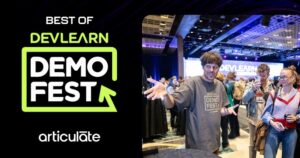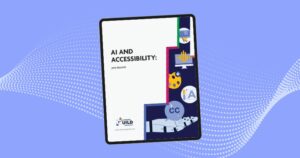In many ways, theprotracted spring was good for our little agricultural community. Theextra rain ended a three-year drought, and pushed backspring fever just long enough to enable students to maintain amodicum of focus during the last few weeks of the school year. But thequiet rhythms of summer supplanted the anticipatory air of spring, leaving me some time to reflect on my volunteerexperience with a class of 9th-grade AVID students andtheir teacher, Ms. L.
Readers mayremember that last fall, I issued an “all hands” call forvolunteers in a community school. For my part, I took on anassignment at the high school in my community, working with Ms. L.and her class of mid-tier students who have college aspirations. Asthe year progressed, I recognized opportunities to weave computingliteracy into the rest of the curriculum activities so that studentscould begin to gain the technical competencies necessary to successin college. In concert with Ms. L. and the students, I piecedtogether technology components that would support the students inestablishing their own social learning network.
Through my adhoc experiment – and my little undertaking can’t beclassified any other way – I hoped to create a social learningnetwork that would:
Extend the benefits of working in/as a group beyond the four walls of the classroom
Integrate computing literacy into the AVID curriculum
Draw attention to the importance of online search skills
On the technology side, I was interested to know whether free,ubiquitously available technologies could be adapted for sociallearning networking purposes; and whether those technologies weresufficiently easy to use for today’s teachers.
Throughout the school year, I considered Ms. L. my client.Accordingly, I checked in with her for a review of the project. Inher words, “I really enjoyed the experience with the AVID Website,and I think the kids enjoyed creating their page. I wish there weremore access to computer labs on campus so we could all work at thesame time.”
“From other people’s perspective, the project was really good. I know that the AVID coordinator liked it, and all three other AVIDteachers enjoyed looking at it and were interested in making theirown. I think we all talked about how, in college, students reallyneed to know how to email a professor, attach a file, upload adocument, etc. With the population that we have in AVID (lowincome), I think that doing all of that at school is important; manydon’t have access at home.”
“I think the Google search stories were a fun idea, and thestudents really enjoyed making them. I’d like to continue tothink up ways to have the Website be more helpful to them. Maybe next year we can have ‘AVID chat’ for help with homework.”
Having observed Ms. L.’s grading habits for the past year, I’dsay she gave me a B+.
My own assessment is far harsher, starting with an A+ for hubris. AsEllen Wagner famously said, “You can’t do learning to people.”The same applies to social networking, whether for learning or anyother purpose. As a designer, I can create an environment andplatform for social networking and social learning; only theparticipants can create the community and generate the networking andlearning.
Of course, this doesn’t relieve the designer of a social learningnetwork platform from the traditional responsibilities of learningdesign. The same analysis of participants, content and technologyremain critical to the success of a social learning program. However,traditional analysis calls on designers to compile a composite viewof the Learner and the Content. Communities for learning, whetherreal world or virtual, are comprised of many learners with differentcontent needs, each of whom must find the support they seek. Reducingthe definition of the target community to a composite view leaves theneeds of many participants unanswered.
Neither can one rely on a “Field of Dreams” deployment strategy.The existence of a well-conceived and -implemented social learningplatform does not in and of itself lead to a thriving social learningcommunity. If participants do not quickly see the utility of theirinvolvement, or if they can’t recognize a return on their engagement,they will quickly drop out. A clear articulation of purpose, easyaccess for all participants, a meaningful incentive system, andallowance for casual interaction among participants are key factorsto a social learning network’s success.
When all is said and done, the value I’ve received from myexperience and efforts has been enormous. I look forward to probingon each of the key points this project has spotlighted, and sharingthose with you.
Many thanks to Ms. L. and her AVID students. Happy summer to all!









